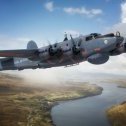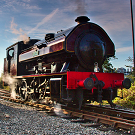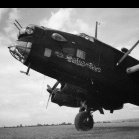Leaderboard
Popular Content
Showing content with the highest reputation on 02/12/23 in all areas
-
Howdy All, Took some photo`s of my latest effort yesterday and thought it wouldn`t be fair to keep them all to myself 🙂 My attempt at building a South Vietnamese F-5E from AFV Clubs 1/48 scale kit Apart from some etched seat belts from the stash, the Sidewinders, bombs and decals from the spares box, built from the box contents Cant say this was one of my favourite builds, took a lot of work and filler to get a decent looking result Mainly due to the kit breakdown so they could do multiple versions from the spues. Made Hasegawa`s `Frankenfourty` look like a walk in the park🙂 Was surprised when trying to research on Google etc how little information there was on them, but they weren`t in service very long before the end came Still good to have one in the collection Hope you enjoy the pic`s, thanks for looking Cheers Russ36 points
-
I don't like Zoukei Mura models, but this Hs-129 is one of the better models of this brand that I have made. Henschel Hs-129 B3 Zoukei Mura 1:3231 points
-
For a club project revolving around fictitious shop displays, I took over this ancient (1961) Hawk model from a club member. 99% of my aircraft models are 1/72 fixed wing types, therefore a 1/32 helicopter was quite a deviation. Add the early sixties engineering, plus very brittle (aged ?) plastic, and it becomes even more 'interesting'. Because of the club project's theme, I built it mostly straight out of the box, with the exception of the motorization and the decals. I designed a new set of decals, with the type of markings seen on the early Huskies, and had it printed by SpotModel. Box art: Custom decal set: Finished model on shop display, rotors turning. Paints are MRP-128 Silver for the silver lacquer finish (not bare metal) and a very old tin of Revell 25 RAL 2005 for the orange-yellow (ANA 634, FS 28915). A full build report can be found here: https://robdebie.home.xs4all.nl/models/h43.htm Rob24 points
-
This is the Kora kit in 1/72. Not too bad a build for a limited production Eastern European kit, not many hassles..JUST LOTS OF RIGGING...SIGH!!! Quite good detail though with resin and photoetch components. It makes up as a great inter-war RNZAF aircraft, I've built it as a very well used 2nd-hand (ex-RAF) pilot trainer used in NZ. Untitled by Harry Follas, on Flickr Untitled by Harry Follas, on Flickr Untitled by Harry Follas, on Flickr Untitled by Harry Follas, on Flickr Untitled by Harry Follas, on Flickr24 points
-
I'm not 100% sure I've done this wonderful kit justice with this build, but I tried my best. The engineering and quality behind it is amazing, any issues with the build were mostly of my own making. I found some of the instruction images a little unclear on alignment of components within the cockpit, but that could have been overcome with a bit more patience and dry fitting on my part. The control column was installed too far forward, so it conflicted with the instrument panel and compass a little, and then it also made the seat sit a little too far aft so it doesn't fit flush with the cockpit opening like it should. If I had realised that the tail end of the control column projected *through* the lower opening in the seat armour plating, this would have led to a better fit. The proper rear view mirror fell victim to my carpet monster, so I had to resort to the round item instead. Minor problem really.21 points
-
The 2012 mould Airfix 1/72 Gnat is an often-shown build on modelling forums. There are many really neat looking previous builds. I always want to find a new angle, so my way into this subject was to look hard at previous builds and see what could be better. I suggest a substantial weakness of the kit is the panel lines. They are massively coarse and leap out from previous build photos. Interestingly the two main sprues (one fuselage and one wing) are different. Both have horribly deep and wide panel lines, but the fuselage is distinctly worse than the wing. This panel line problem is compounded by a look at real-life photos. The Gnat has the tightest fitting panels. On good quality closeup photos, often it is almost impossible to see access panels or the main join lines. Overall, the out-the-box kit has a heavy rather clumsy feel to it. With such a small and dainty subject, it stands out even more. So, you can see I convinced myself to sand back all surfaces to much reduce panel line visibility. On the underside and are intakes the panel lines were wrong anyway, so they removed and recut. All antennas were replaced by new, cut from brass sheet. U/c doors were all scratch made from metal, except for the main piece of the main gear door. A Pavla models resin cockpit was used, though I’m not convinced it added much, but it took me ages to track down one in the USA. The biggest hassle was with the ejection seats. The Airfix originals are hopeless, and the Pavla versions looked a bit underwhelming. The Wolfpack Gnat ejection seats were therefore purchased, but they are just too big. Not only did they need grievous hacking to make them fit on the cockpit floor, the head-box is over-size. Petter worked a miracle fitting two ejection seats into his tiny jet, and it’s not a surprise that others in his wake struggle too. In the end the Wolfpack seats were discarded and the Pavla ones were used, but with some scratch built additions. A boundary layer bleed slot was added at the intake. That’s a tiny detail (visible in the last photo), but it makes a difference! The Q-feel controls of the Gnat mean that setting some control surface deflection is not accurate, except for the rudder. The rudder was duly cut from the fin and set on an angle. The nose wheel was tweaked accordingly. A tougher job was creating deployed flaps. Cutting the flap out of the upper/lower wing is easy enough, but the flap then needed to be built up to a triangular section with plastic strip and filler. They look pretty good when fixed back on with the hinge fitting. I used metal replacement u/c legs. Every time I buy these I wonder if they really bring anything to the party. Usually they are no more detailed than the plastic originals, but some tweaking of the angle is possible, which can help. There was no vac form canopy option, so I live with the bulky Airfix canopy. In my build the canopy would not shut because the glass thickness is about 10 times over-size, but I was always going to have it open, so that problem solves itself. For finish I wanted a standard flight line T1 from the earliest use of the Gnat. “On Target” decals gave me three options for silver/dayglo orange, I initially chose XM698, but enquiries on this forum gave evidence that it was a spurious finish. The DB aircraft (as is XM698) have no photographic or other evidence that they entered regular training use. I switched to a slightly later production machine from CFS. The decals are very good quality, but there are some errors in the roundel and squadron code sizes. I also persuaded Airfix to let me have the full decal set to provide me with stencils (my kit came as a starter set, with nothing useful in the stencil area). The flap and aileron stencils were scratch made because the Airfix ones were black not red. There are enough people saying the Gnats were sprayed with “high speed silver” to believe that is true and the finish was not the natural aluminium. Hence I used Humbrol 191 which airbrushed to a much better shine than I expected. I have lost most of my hair spraying Alclad lacquers on bare metal models. Have I been missing a basic trick here? For dayglo I used Humbrol 209. This all happened with less drama than usual. I did minimal weathering/chipping because I was happy to go for a fresh look. As an oob affair it went together well except where the upper wing piece joins the rear fuselage, so at that level it should be commended as workable kit. So, what do you think? Did my mission of reducing panel lines work? Actually I think they still look way too visible, especially on the horizontal tail. The lack of a vacform canopy is a big deficit and despite efforts it looks clunky. If a vacform comes on the market, the jet might “return to Dunsfold” for reglazing. So overall, despite about 80 hours work I do wonder if a truly top notch Gnat can be made at 1/72 from this kit. Still, it’s a pretty little model that was nicely rewarding to build.19 points
-
My latest build is the 1:144 Authentic Airliners A340-600 kit in Iberia colours. I made the sister of the A340, the A330, a few years ago and I didn't want to simply create an "A330 but with four engines." I didn't want to use Bra.Z's conversion (it has quite a few issues), so I was waiting for a new kit. Fortunately, Authentic Airliners came out with one, so I jumped on it right away when that one became available. Took me several years to finally complete it though. The Airbus A340-600 is a wide-body, four-engine commercial passenger aircraft developed in the late 1990s by the European aircraft manufacturer Airbus. It is the largest variant of the A340 family and is designed for long-haul flights, with a range of up to 14,600 km. The A340-600 can accommodate up to 475 passengers in a typical three-class configuration. The A340-600 was designed to compete with other long-haul aircraft such as the Boeing 777 and 747, as well as the McDonnell Douglas MD-11. At the time, the aircraft featured several innovations, including a new wing design with a higher aspect ratio and larger wing area for improved lift, as well as more powerful engines. It also incorporates modern avionics and a fly-by-wire control system for enhanced safety and efficiency. The first A340-600 was delivered to launch customer Virgin Atlantic in July 2002 and entered into service the same year. Other major users of the A340-600 include Lufthansa, Emirates, Qatar Airways, South African Airways and of course Ibera. Despite its advanced features, the A340-600 has faced challenges in the modern aviation market. Due to its four-engine design and higher operating costs, it is less popular than twin-engine aircraft like the Boeing 777, which offer similar performance and lower fuel consumption. Airbus ceased production of the A340-600 in 2011 after delivering a total of just 97 aircraft. In recent years, some airlines have retired their A340-600 aircraft or converted them into freighters. However, the A340-600 continues to operate with several major airlines and is known for its spacious cabin, comfortable seats, and pleasant flying experience. Overall, the A340-600 remains a remarkable aircraft in the history of commercial aviation. As said before, the kit is from Authentic Airliners and is truly fantastic. It captures the essence of the real thing perfectly (as usual). It’s quite a heavy kit though (0,7 kg) and as such metal undercarriage is supplied with the kit. Decals are from 8a Decs. Cockpit windows are from Authentic Airliner decals, as are some of the details. I’ve also used some details from various spare decals that I had laying around. The “metal” parts of the engine pylons are also decals, that I made and printed myself. The red navigation light on top of the fuselage is from Counting Rivets Models. At any rate the pictures (The display bases are made by me): All in all this was a very pleasant build and the largest kit I've ever build. The only problem I had was with the 8a Decs decal set. The decals are very thin and have a tendency to crumple. Also they didn’t line up at the top of the fuselage, so I had to cut them several times to get it just right. With six completed models, this will be the last one of the year to be finished by me. Next in line is the Zvezda 1:144 Il-62 Aeroflot (with the KLM logo) , but that one will most likely be completed next year. Thanks for reading and see you next time!18 points
-
Hey all. I just finished this fantastic little Stug III B kit from Tamiya. I've had it on the shelf for almost two years now and finally got up to building it. The build was relatively quick and much like all Tamiya kits, a pleasure to work with and ADD fun stuff to increase the interest in the model. Tamiya might not always have the most "bling" in their kits, BUT you always know what you're getting. Simple. Usually stress free. And Fun to customize. BUILD and CUSTOMIZATION: It did it mainly OTB with added metal Winterketten tracks (you can't get anymore). I have the T-REX as well, but man they are so much of a pain in the bottom and I'm glad I had these metal ones for this kit. I had some great detailed open hub drive sprockets I forgot I ordered with the kit. Really nice detail. They are T-REX as well. All these new 3D printed stuff is such a change from 30 years ago. I did some added stowage with a PE bin, a ditching beam (that I whittled myself) and some added fun bits and bobs (for you Brits;) to make it interesting. The ditching beam is supposed to be stolen from someone's farm house as well as the fence posts, etc. Those sweethearts! But, something cool to focus on with the build. I actually had all the PE to add onto this, but it's been so long since I've modeled that I didn't want to take months to get this bad boy up and running, so I kept it simple and fun and spent more time invested in the painting and weathering. Here's the build before painting and weathering (below). The tracks are the highlight of the kit if you ask me. It makes it look like some kind of spider or armored turtle. Stout and bad bottom! The low profile of the Stug is awesome as it is, but WIDEN those tracks and now she's really cool!! PAINTING and WEATHERING: I primed it black and then started the slow build up of color and gradients with a light grey/blue/deck tan. Probably three to four layers of color and then a blue wash to bring out the color. I did quite a bit of dry brushing to get the highlights to pop and begin the chipping process. In the past I usually use acrylics for the lighter chips. But, for this model I used oils. Buff. Off white. It really worked well and so much easier to control and reposition if you make a mistake. As far as weathering, I was going to do a winter whitewash, but I really liked the grey blue so much I left it as is. Glad I did. I think the white wash tends to really dull the model and the panzer grey is such a cool and interesting thing to try to paint and weather. I used an industrial earth wash, with sepia oil, as well as Mr Weathering muds. The colors always come out different than the color they look in the jar, so I had to add some oils to change hue and saturation to get the effect I was looking for. Panzer Grey is always one of the hot topics and points of issues for us modelers. Is it grey? Is it blue? Is it dark? Light? Almost black? In reality, it is I think very dark, almost black/blue. But as a modeler, if we paint our small little tanks like that they will have ZERO interest and life. It's our job to increase the contrast, saturation, highlight and shadow to make these palm size subject actually look real. I kept my base coats thin and very light. As I weathered, it of course darkened and started changing the saturation, hue, and tone. The lighter work allows the other things to really pop more when you continue with the work. I couldn't decide on the color for the beam, so I painted it maroon. Nope. Then blue. Nope. Orange? What??? Orange?? WTF. Yellow? So I said "Screw it", and I painted it ALL the damn colors and then stripped it down like it was torn and battered. This was one of my favorite things to do on the kit. Fun! I made the blankets from milliput. They are OK, but the Tamiya epoxy is the best for this. I was out. I even made the barbed wire. And cut myself several times in the process. It's so easy to lose all the paint work, highlighting, shading and detail you work so hard on in the painting process when you go to weather. To be honest, I many times run out of steam by the weathering process as I have so many times lost "control" and over done the process and make a once great looking kit look overdone and washed out. It has taken me years to learn control while doing this and usually I don't get it right. But on this one, I was pleased with how it came out. It came out just as I had imagined, which is rare for me. The back fence is simply balsa wood glued together and painted and weathered. I like trying to add some color and interest that makes the subject more interesting and realistic. These Stug's were the mainstay of infantry support and always with the troops and they would throw everything and anything they could carry on these things. It was their home. The added winter wheat is something I saw on many reference photos for the stug. They would, of course use whatever surroundings they had to add camouflage and cover. Not to mention simply plowing through anyone's property and taking anything around with them as they did. I thought it added an interesting element to the model and I plan to add a small diorama base that will showcase the wheat. I'm not sure what the little skull/devil guy is, but of course it totally makes the model POP and seam quite intimidating. Those Germans, they always had the coolest little gremlins. Well, that's it for this one. I still have a few things I may add, but in all I am moving onto some other kits on the bench. This may be one of my favorites I've done in the past 35+ years of this love affair. Like many modelers, I live a "stug life" and have always loved the Stug as a subject. Especially the B. Hope you like it. And if you don't....well, I love you anyway. Cheers! Graeme17 points
-
Dear friends, here is the new "Sally" bomber in 48th from ICM. A long awaited model, worth the wait should I say.The model is a Ki 21-1, early model of the "Sally" mainly used in China and in the very early days of the Pacific war. I would have prefer the Model 2 with the more streamlined engine covers and dorsal turret as the wore very interesting camos. So my first goal was to find a model 1 that suited my wishes. On page 32 of Pacific Profiles Vol2 from John Claringbould, the plane n°8 was the perfect subject. As usual all markings are made of home made masks, included the tail marking. The model is very precise and the interior is full of details. Some improvements were made using the superlative Arawasi n°3, which is the book to have concerning the Ki-21. The plans included in this book are so helpful when you wish to rivet the plane, but it is a long process. The notice gives a pattern of the windows masks from which I extract my pattern to cut my own. The Ki-21 has a lot of windows and the long greenhouse deserves care and attention. Working in sub assemblies is a must as some areas are tricky and the plastic very fragile! ( I was in the process of rigging the antennas wires when the mast broke in two), so be ready for some evergreen replacements. The 14th Hiko Sentai arrived in Rapopo in Feb 43 and this Ki-21 1 was used as a transport and no more as a first line bomber. The plane was painted all over in grey-green and the camo randomly applied on the ground by the maintenance. Sorry for the pics but the weather is not friendly and this model is much bigger than my studio place. A very good model and some good time! What else. E45757BE-BDF6-4BA2-B7AF-C57246AFF137_1_201_a by jean Barby, sur Flickr 7FAE3651-594A-4172-BE79-B0119C70A77A_1_201_a by jean Barby, sur Flickr 65CE2BA2-3C08-4536-83FC-7B5C67E5D771_1_201_a by jean Barby, sur Flickr B73583DF-B893-4A3D-9BCE-7CA3EEB528B3_1_201_a by jean Barby, sur Flickr CDC66449-D5BD-415A-92AC-429F30F80259_1_201_a by jean Barby, sur Flickr 34D546B6-241A-40D1-AEE0-6814975DC3E6_1_201_a by jean Barby, sur Flickr 0CC1EC91-C251-41EC-A93C-02CD31E3C12C_1_201_a by jean Barby, sur Flickr C1015A6E-FC5B-4A71-8039-98A255A5BE82_1_201_a by jean Barby, sur Flickr D325DEA1-874C-4C33-A5D6-DED908C7DCA2_1_201_a by jean Barby, sur Flickr 95B4CB6E-905B-4208-AD69-75D96F0BF0A8_1_201_a by jean Barby, sur Flickr15 points
-
Hello, Here it is at last, my first scratchbuilt, first resin model and first biplane. The model was designed from Paul Matt's plans using Autodesk Fusion 360, then printed on an SLA (resin) printer. I really enjoyed designing this model. The project took me three years, but I got it done. I had a lot of trouble with the last stage, fitting the rigging. They are SBS photo etched ones. Thanks to everyone who gave me encouragement and advice during this project. Now it's time for the photos. Regards.15 points
-
Rogożarski IK-3 from Classic Airframes Resin. Camo "2159" - 6 April 1941 Dusan Borić died in dogfight - Belgrade defender Old CA resin model in 1/48. I improved many things, new propeller, exhaust, riveting, details ....and made new cast. I invite....13 points
-
Another oldie, but a goodie from Tamiya. Light sea gray as base colour and field grey for the uniforms. One of my favourite kits from the 70s. Brush painted with Tamiya acrylics and weathered with artist oils and Pigma Micron pen. Caption this image if you like. ⚓👍11 points
-
After pair of German WWII reconnaissance vehicle, let change to modern US MBT: Abrams. This one is published by Trumpeter, come with chimney, mine roller & mine blade. Since i painted roller in green camo before, so chose blade (from previous spares parts) in desert camo. 1/72 M1A1 Abrams -w Mine Blade Working Photos: Product Photos:10 points
-
This was a quick comission build i did for a customer of mine.Painted in gunze acrylics.The model was built OOB.10 points
-
This past week or so I have recklessly purchased… I already have one of these nearly finished. Only I wrecked the canopy moulding. This was an expensive way to buy a new canopy moulding. This was added to the above to make the postage worth the cost. I did pay quite a bit more than the £1.95 on the price label. It does fit my 1940 obsession, only I’m not ready for the Med and N Africa bit yet. The transfers are shot, but I’ll work something out. One day. Finally, a rather frozen postie delivered this little lot from Ceredigion. I seem to be getting very serious about the accuracy of my set dressing models.10 points
-
Here are the three parts that have been causing me just a tad of frustration. My idea of using blu-tack to hold them in place while I got the alignment right was only a partial success. The blu-tack didn't stick to the plastic very well at all, but I got there in the end. I think I must be doing something right. At least to my eyes, the bits are starting to look like components of a very large aeroplane! That's it for a few days now. I'm hopeful I might get the upper and lower wing halves joined next week. Thanks for looking. Murray.9 points
-
Just had an eye test (I have excellent vision thanks for asking). The optician was a gentleman possibly late 30’s. He asked if I had any hobbies and I replied “I build Airfix kits” (shorthand for I assemble scale replicas of interesting aeroplanes and seek out interesting and unusual colour schemes and if necessary, add or modify details as appropriate). ”What’s an air fix?” ”Airfix kits…..making planes by sticking parts together with glue? Plastic kits? A I R F I X….? He eventually grasped the concept, but I fear we have lost a generation. Trevor the Old But Not Necessarily Wise8 points
-
Fairey Gannet AS.1/AS.4 (A11007) 1:48 Airfix The Gannet was another great British aircraft that began development while the fires of WWII still burned, and was specifically designed to take advantage of new radar technologies that had been developed during wartime to perform the complete anti-submarine warfare task, taking the role of both the hunter and the killer. Early design work experimented with the use of a single turboprop engine for fuel economy to allow the aircraft a long loiter time, but this was found to be sub-standard, and Rolls-Royce cancelled the engine design to concentrate on more pressing wartime needs. The Armstrong Siddeley Mamba engine was considered as an alternative, and it was decided that two of these engines with a common intake and gearbox would be suitable. Known as the Double or Twin Mamba, that gave the design a wide ‘chin’ and twin exhausts. The engine would power two contra-rotating props that had dual roles, eliminating any torque steer effect on take-off and landing, and giving the crew the option of shutting one engine down to save fuel and extend loiter, as there was enough power in a single engine to keep the aircraft aloft. By 1946 Fairey had been given a contract to produce two prototypes, which first flew toward the end of 1949, and the testing programme ironed out the bugs, which included a crash-landing that damaged one of the prototypes and caused some delays. By 1950 the testing process had progressed to the carrier trials portion, carrying out the world’s first carrier deck landing by a turboprop aircraft. The second prototype was completed later, and had benefited from changes to the design based upon experience with the first airframe, which had now racked up two crash-landings. Other changes to the specification were forced upon them too, including a larger bomb bay, an additional crew seat and canopy, and relocation of the radome, all of which was mirrored on the first prototype to ensure its ongoing usefulness to the testing programme. Successful completion and the increasing likelihood of war in Korea led to an order of 100 AS.1 airframes, reaching service by 1954 after resolving a compressor stall issue that had grounded the first production batch for two months. The AS.4 was created later in the 50s, with better engines and avionics, then to replace the ageing Skyraiders in the AEW role, a fundamental re-design of the fuselage was made to accommodate the large radome centrally mounted under the wings, which was designated AEW.3, and was fitted with a new variant of the Double Mamba, which can be easily differentiated from the earlier marks by the fuselage design and the heavyweight radome underneath. Export customers included Germany, Indonesia, and Australia, where they stayed in service for a long time. In the 1960s the Royal Navy transitioned the ASW role to helicopters, effectively making a proportion of the Gannet fleet redundant, but they were found alternative employment with a few alterations, some performing the Electronic Warfare role, and others converted to mail delivery and communications aircraft, travelling between the carriers and shore establishments. By the late 70s, the British Government had mandated a retirement of the Navy’s last carriers, which it was assured were unnecessary, and the Gannets were retired at around the same time, leaving the fleet with a capability gap just in time to make protecting the “through-deck cruisers” and the rest of the Task Force ships during the Falklands War. The Kit 1:48 modellers have never been well-served with Gannet models, although for years the best choice was the Dynavector vacformed kit, with the Classic Airframes coming second, despite being at least partly injection moulded. Both required more modelling skill than your average injection-moulded kit, and both are long extinct, although I still have one of the Dynavector kits on my shelf as I type this. A few months ago Airfix announced they would be releasing a brand-new tooling of this classic post-war British work horse, which caused a great deal of happiness amongst British and anglophile modellers, promising a modern injection-moulded kit that wouldn’t take arcane incantations or selling one’s soul to a deity of your choice to successfully complete. It has now arrived, and the wait has been worth it. The kit arrives in a large top-opening box that is filled with seven sprues in Airfix’s recent dark grey styrene, plus a single sprue of clear parts, finishing off with a large decal sheet and the instruction booklet, which is printed in colour and has two separate A4 sheets of glossy paper depicting the markings options and stencil locations. If you have seen the newly tooled 1:48 Buccaneer or Sea King, you will know exactly what to expect, which is a ton of detail, clever engineering, and multiple options that give you flexibility of completion of your model without the results looking toy-like. The surface detail is excellent, covering the skin with engraved panel lines and fine rivets, plus deeply recessed detail in the bomb bay, cockpit and landing gear areas, which are the focal points of any aircraft model that carries a pilot. The front page of the instruction booklet carries an emboldened note about nose-weight, as the Gannet was a tail-heavy aircraft in real life, a trait that also extends to the model. You are advised to add 12g to the purpose-made box under the cockpit floor, and a further 55g in the nose area, with a cut-off line shown on the instructions to avoid baulking the prop insert and intake fairings. That’s a lot of weight, so ensure you have plenty to hand, and weigh it accurately beforehand, as once you close the fuselage there will be little opportunity to add more. Remember that if you are planning on installing any aftermarket, the balance may change, and you may have to increase the amount of weight to compensate. Once you’ve finished salivating over the sprues, clean the drool off, then construction can begin with the bomb bay for a change. The main length of the bay is moulded as a single well-detailed part, which is completed by adding the front and rear bulkheads, both of which have a gaggle of stencil decals applied to create some additional visual interest. The nose gear bay roof is fitted to the front, and a large H-shaped twin spar unit is laid over the exterior of the bay roof, adding a support on the aft faceted segment, then gluing the first nose weight box over the front of the bomb bay, inserting 12g of nose weight inside. It’s advisable to glue the nose weight in firmly to prevent rattling, and if you use lead shot, it’s possible some may escape if you invert the model, unless there is space to add a lid to the box using styrene sheet – the instructions seem to imply that there will be, but everything is still on the sprue as I write this, so it’s hard to tell conclusively. The cockpit floor is a long part that covers the length of the existing assembly, overhanging to the rear, and at this early stage only a circular decal is applied to the pilot’s side consoles. The model is flipped onto its back to add the tapered side walls to the nose gear bay, inserting a detailed rear wall flat against the front bomb bay bulkhead to give it some visual impact. Another 180° roll is needed to start adding detail into the cockpit, starting with a three-part assembly that includes decals for the 2nd crewman’s instrument panel, mounting over a raised block on the cockpit floor. The bulkhead behind the pilot is applied to the other side of the separator, with a curved part linking it to the instrument panel, adding another bulkhead with added seat backrest for crewman no.2, followed by the seat base with recessed pan to accommodate the operator’s parachute pack. The pilot’s seat is a single part, and a short control-column is fitted in front of this, creating his instrument panel with gunsight and decals to depict the dials, which is attached to the side consoles in his cockpit. Another bulkhead is built with two equipment boxes on the sides, and a rack with another box and three circular screens that all have decals applied for the rear seat crewman. The third cockpit is separated by a bulkhead that is basically a rack with two large equipment boxes mounted within it, behind which the rear seat is fitted, comprising two parts, so that the crewman can play with his toys to the aft. The fuselage halves are prepared for use by adding cockpit side wall inserts at the front and rear of the compartment, painting the rest of the area in grey, and adding stencil and dial decals to the inserts to add more interest for the intrepid viewer. The starboard fuselage half is then slid into position over the two spars, and at this point the large 55g of nose weight can be added under the cockpit, but taking care not to let it creep forward and baulk completion of the nose. The port fuselage half is slid over the opposite ends of the spars, permitting closure of the fuselage and the hiding of seams in your preferred manner. Once the glue is dry and the seams dealt with, you can choose to depict the rear radome under the fuselage as deployed for operation, or retracted for the rest of the flight envelope, bearing in mind that the extended option can only be used whilst in-flight, as it will cause the model to tip forward when on the ground. To extend the radome, the fairing around it has a flat plate inserted, onto which the radome fixes, whereas the retracted option leaves this off, and the radome too is left until later for both options. The main gear bays are built up inside the lower halves of the wings, and are just one of three rectangular(ish) spacers that set the distance between the upper and lower skins. The innermost spacer has bay wall detail inserts applied all round its inner face, with a small fire extinguisher installed in the starboard bay, and remembering to test-fit the inner bay doors so that they fit easily into their slots, saving anguish later if you find that they don’t fit. Someone has clearly test-built this model, which is good to know. The ailerons are made from upper and lower halves, as are the inner flap sections, the outer flap panel are single parts that have two fairing bumps inserted into recesses, putting them all to one side until near completion of the wings. You have the choice of building the Gannet with its wings folded for storage below decks, or deployed for flight, with different parts included for both options so that there is no fiddling with wing sections to align them in relation to each other and the ground. To build her ready for flight, the full wing halves are prepared by drilling out flashed-over holes in the lower surface for rockets and pylons if you are using them, then gluing the three internal supports into position on their raised brackets, the innermost one being the gear bay with inserts applied earlier. The roof of the bay is detailed with moulded-in ribbing, and should be painted at the same time as the rest of the gear bay, closing the wing halves and installing them over the spars once the glue is fully cured. The ailerons are then inserted into their cut-outs at the ends of the wings, and a clear wingtip insert is slotted in, masking the tip lights off so that they remain clear after painting. Building your Gannet with its wings folded is a necessarily more complex affair that will result in a more impressive model that will take up less space in your cabinet, but will take more care when building and painting, so it’s a two-edged sword. The only way to get around this thorny decision is to buy two, which is a tempting prospect. The fixed inner wing portion is built first, fitting the already assembled bay inserts into the lower inner wing panel, adding the fold mechanism, then applying the upper wing surface, and installing the flaps into their tracks in the retracted position. Both the inner wing sections are then slipped over the twin spars and glued into position. The central section has holes drilled out for rockets if you plan to use them, adding the inner support box and a two-part fold mechanism to the outboard edge, the outer flap panel (retracted again), and a rib is inserted into the inner edge. The wingtip panel is joined around its support box, adding a clear wingtip to the outer end, a landing light in the leading edge, and fitting a rib into the inboard end. They aren’t added to the model at this stage however, instead putting them to one side while you build the rudder from two halves, the two elevators from two halves each, and the flying surfaces, again from two halves. The fins are inserted into slots in the tail, gluing their flying surfaces to the rear, and adding the little finlets into sockets above and below the elevators, taking care to align them with each other. The version with extended wings can be modelled with the flaps deployed for landing and take-off or flush for normal flight. To pose them flush, they are glued into position without further parts needed, while the deployed option adds two actuator arms inserted into notches in their thick leading edges, which have extra plastic moulded into the forward mounting point, which should be removed after painting and before installation, presumably to aid handling during this process. They are glued into position in their tracks, taking care to have everything painted and weathered to your liking before you do. In case you were wondering, the installation of the mid and outer panels for the wings-folded option are left until much later in the build. The nose of this turboprop is a particular curved shape, and the exterior is moulded as a single part, into which you slide a long prop shaft without glue, instead gluing a washer over it, taking care not to flood the area with too much that may seize the prop shaft inside. A pair of conjoined cylindrical inserts are glued behind the intakes that add extra strakes and some depth to the intake, with a scrap diagram showing how it looks from behind. The completed insert is then offered up to the front of the fuselage, which is when you will find whether you left enough space between the nose weight and the fuselage front. If you can’t fit the part as it stands due to the nose weight taking up too much room, my callipers suggest that there is around 2mm of styrene at the base of the trunking part that could be removed if necessary. Sand and check as you go however, or be prepared to paint the front of the nose weight black if you accidentally break through. This short diversion leads us to the landing gear, which can be portrayed retracted or deployed for landing by using certain parts and omitting others. As you’d imagine, the retracted gear option is the easiest, first building up the main wheels from two halves plus two hubs, which will be used for both options. They are attached to their respective retracted legs that creates enough of the structure to pass inspection once the outer bay doors are installed over them. The nose gear bay is a single part that covers the whole bay. To deploy the gear, the outer main bay doors are slotted into the grooves that you test-fitted earlier, then the gear legs are built from three parts and inserted into the bays, plugging into sockets moulded into the roof, ensuring that the scissor-links point aft. The nose gear bay is prepared by installing a retraction base in the roof, then building up the leg from three parts, plugging it into the bay roof, and fitting the retraction jack frame at the ends of the base and to the forward face of the strut, which requires the jack to be slipped over the leg, and must be done before installing both two-part wheels on the axles, adding another part to the axle between the wheels. The bay doors are split into two sections per side, and they open at the centreline, hinging down at slightly different angles, the large doors supported by retraction jacks near their forward edge. I do love a contra-prop, and have a few in my cabinet already. Each prop has four blades moulded into a central boss, which mounts on a plate behind it. The rear prop has a tapered spinner portion fixed to the front, while the front prop has the tip of the spinner glued to it. The rear prop is pushed over the axle without glue, fixing the front prop in position with a little glue on the tip of the axle. If you used too much glue when securing the prop shaft earlier, the front blades won’t be movable once glued in place, so take care. The next choice is to have the bomb bay open or closed. Again, the closed option is simple, requiring one part with an engraved join line moulded into it, sealing the bay detail away forever. If you want to show the detail, first you must choose one of two weapons loads that you will find on the sprues, which comprise the following elements: 2 x Mk.30 passively-homing acoustic torpedoes 6 x Mk.11 250lb depth-charge 5 x Sonobuoy The torpedoes are built from two halves, a two-part fin/prop assembly, plus an annular stabiliser, the depth-charges two halves plus flat nose and fin sections, and the sonobuoys are made from two halves and two flat ends. The torpedoes are fixed into the front of the bay on mounting blocks, the depth charges are fitted to two supports in racks of three, while the sonobuoys are bundled together on two rails in a pack of five. One loadout has the torpedoes plus sonobuoys in the rear, the latter on an adapter plate, while the other load has four depth charges on individual mounting blocks instead of the sonobuoys, fitting bay retraction jacks at the front and rear of the bay on each side, supporting the two double-thickness bay doors in the correct open position. The Gannet can also carry underwing stores on pylons just outboard of the main gear bays, which are made from two halves plus a mounting plate that is contoured to the wing, so take care to mark them with L & R or S & P to prevent confusion later. The individual rockets are carried under the mid panel of the wings, and are fitted on single-part rails that slot into the holes made earlier, installing one three-part rocket to each rail after painting. A scrap diagrams shows that the rails are fitted perpendicular to the wing surface, not the ground. It's now time for some small parts, starting with a short blade antenna on the spine that should have a hole drilled 28mm behind the second cockpit. An alternative requires two holes drilled in the spine, one each side of the centre, which sounds a terrifying prospect until you see the jig that is included. This curved jig has a pair of lumps on the inside, which should marry up with two depressions behind the second cockpit, and the two holes in the rear should allow you to drill two 0.8mm holes accurately to fit the antenna into position. An antenna glues to the fixed portion of the canopy between the front two cockpits, which is next to be glued into place. Most of this will be painted, leaving just two small windows on each side of the part. The windscreen gives you options too, supplying windscreens with and without a moulded-in wiper blade, catering to those that purchase aftermarket sets that include replacement wipers, saving you some time removing the moulded-in blades and polishing the screen back to clarity. That’s pretty thoughtful of them, and an option I’d like to see more frequently. There are a trio of pilots in the hands-on-knees pose if you wanted to fill the cockpits, and they’re all moulded identically with bone dome helmets and oxygen masks, unlike the guy pictured in the instructions, who has a WWII era leather helmet. There are three individual canopies for each crew member, and they can all be posed open or closed, as you prefer. Just when you think it’s safe to put the glue away, you need to flip the model onto its back to install the radome, and hope you built the landing gear option appropriate to your choice of radome position. Radome down – wheels up. Radome up – wheels down. While the model is inverted, the arrestor hook is inserted into the step under the tail, fitting a small T-antenna under the port elevator, a small light under the starboard wingtip, and a pitot under the port wing. Lugs are attached under the wing roots to hold the looped ends of the catapult strop, and the tubular exhausts with angled tips are inserted into their fairings on the fuselage sides, the longer edge closest to the fuselage. You were probably thinking we’d forgotten the folded wing panels, but they’re on the very last page of the instructions, starting by adding long pivots to the fixed inner panels to mount the centre panel, helped by a scrap diagram. The outer panel is attached to the centre panel via a hook-shaped pivot, adding the ailerons to the rear edge, so that the wing forms a Z-shape when viewed from the front. A rod is used to prop the wings when folded, fitting into the inner rib of the centre section, and a hole under the wingtip, as shown by a silhouette drawing in the top corner of the step. The port centre section has the pitot probe inserted, and here I got rather confused, as for the straight winged option, the pitot is under the port wing, and the tiny light under the starboard. The folded option shows the light and pitot under the port wing panels. Markings There are three decal options included in this first boxing, both wearing the well-known Royal Navy scheme of Extra Dark Sea Grey over what Airfix calls Beige Green, or Sky if you prefer. From the box you can build one of the following: Gannet AS.4, 849 Naval Air Sqn. HQ Training Flight, RNAS Culdrose, c.1959 Gannet AS4, 815 Naval Air Sqn., HMS Ark Royal, 1958 Gannet AS.1, 847 Naval Air Sqn., RAF Nicosia, Cyprus, 1957 Decals are by Cartograf, which is a guarantee of good registration, sharpness and colour density, with a thin gloss carrier film cut close to the printed areas. Conclusion It’s a fine model of a superbly ugly aircraft that was also very cool, and performed a thankless task of vigilance through the deepest period of the Cold War, quite literally. It’s well worth picking up at least one for the collection, maybe more. Very highly recommended. Review sample courtesy of8 points
-
Hello all, This is My very first post on this forum and hopefully not my last hah. This is My attempt at Creating the Type-61 JGSDF Tank which has been My favourite Tank since I was about 8 so when I found this on my Local modelling website I bought it instantly. It took Me about a day to fully build the Tank but painting took about two days because I'm fairly incompetent at painting. Anyway Please enjoy the images and share any criticism You have with the Tank itself. Kind regards -Mr Me8 points
-
Gotta love the colourful USN schemes back then. I think I have that decal sheet as well. And the Hasegawa kit somewhere... Carter wanted to add the orange ever since the air show this past summer. What's not to like about afterburner glow? Yeah, that private balcony and hot tub were great. Wifey and I always book an interior cabin with no windows and just enough room to bump your head on everything. I always thought we just sleep there right? No need for anything fancy. Especially now that my daughter and son-in-law get the palatial suite. Plenty of room for all of us on that balcony! Here are some other views of it (that's Miami Beach in the background): A shining example - good one. I got it right away. Pretty clever costume - thank goodness there is no elevator in their home. So far I've filled 21 bags of leaves. And these bags are 55 gallon drum liners. Stupid trees. One of the maples in the back yard drops most of its leaves in the swimming pool. I finally got smart enough to put a net over the top of the winter cover to catch them all and make it easier to get them out. If you leave them on top of the cover they turn into a nice slimey mass of organic ooze in the spring. Yeah, we call it fall because that's what the leaves do. It's the defining characteristic of the season. Hmm, so I guess we should start calling winter "shovel," spring "sneeze" and summer "rain." Off to the cookie bake... Cheers, Bill8 points
-
Mentioned in the last thread that I was a tad skeptical about an ebay purchase, low price and no photos of inside the box, thought I was right to be as I had no delivery updates a week in, but later that day tracking was adding and it arrived this morning, nothing wrong in the slightest, a great purchase, only a small problem, didn't realise just how big the Neptune, hoped to display it underneath my Shackleton, not so sure it will fit now without some creative standwork8 points
-
Camouflage on. chipping fluid was added before the camouflage was added, I’ll let it dry over the weekend before I start chipping.8 points
-
8 points
-
7.5mm brass tube arrived today to allow me to fit the missile to the front so took the opportunity for a try fit... The missile close up, didn't have a good pic of it before:8 points
-
Should this be here? Or should it be in maritime? She's an airship after all and she never properly flew but ended up in a watery grave when she broke up being moved out of its hangar in 1911 for her maiden flight. But I think this is probably more appropriate. If the MODs disagree, very happy to move the thread to wherever people think more appropriate. By way of background, this started in the recent FAA GB when I foolishly thought I could do 2 models in one GB. I usually struggle to complete one (as I proved this time around, finishing a 1/48 Lynx HAS 3SGM with 3 hrs to spare after a 2 week extension). So the first part of the build log can be found here: For those who are unfamiliar with the early days of Naval Aviation, Mayfly, or to give her her correct name, His Majesty's Airship No. 1, was the UK's first rigid airship. She was commissioned from Messrs Vickers and Sons Ltd in Barrow in 1909 by the Admiralty who wanted a long range scout to operate with the Fleet. Based around the designs of the German Zeppelins, she incorporated several supposed improvements which would offer greater range although some of these would prove to be her downfall. From the outset the programme ran into problems and it took Vickers over a year to construct a shed over its Cavendish Dock in which to build HMA No 1 when it should have been less than 2 months. Thus it was not until May 1911 that she was ready to be moved out of the shed to commence initial trials tethered to a 38 ft mast. Almost immediately the team and Vickers and their Admiralty overseers realised that HMA 1 was too heavy and that significant design changes would be needed to enable her to get airborne; the engineers calculated that around 3 tons would need to be removed. One of the major design changes that resulted from this was to remove the strengthening keel against the advice of one of the senior designers at Vickers who resigned in protest. Under considerable pressure from the Admiralty, HMA No 1 was next moved out of the shed on 11 Sep 1911 in marginal weather conditions. When half way out she was caught by a gust of wind, rotated through 90 degrees around her longitudinal centreline but as she righted, the lack of longitudinal rigidity caused by the lack of keel meant that she broke her back. There are also conflicting reports that the accident was caused by poor handling by the ground crew though the official BOI blamed the weather conditions only. Captain (later Rear Admiral) Murray Sueter, known by some as the father of naval aviation, wanted to repair her and continue the trials but there was little appetite in the Admiralty where the Navy had a new First Lord, Winston Churchill, who was not a fan of airships and refused any further investment; Thus HMA 1 was left to rot in the shed where she had been built. However, valuable lessons were learned which were incorporated in later British airship designs. This model is 3D printed using an Elegoo Mars resin printer with the various sections being drawn in Fusion 360 CAD software. When I realised 3 months ago that if I was going to finish anything in the GB, I needed to concentrate on one only, I had printed all of the hull sections, glued them together (with a few mishaps) and added the keel. She then received a couple of coats of Halford rattle can primer and a couple of coats of topcoat. There is much debate about her colour but the fount of knowledge of all things airship, @Martian, assured me she would have been natural linen which accords with one contemporaneous report but disagrees with another which said that she was silver on top. Given that I can see not no difference in colour from top to bottom other than that which would be caused by shadow, I am going with the natural linen look though having painted the topcoat, I am convinced that the colour is too yellow. I do need to repaint to reflect the slightly lighter colours around the frames and the one darker area on top just forward of midships (see bottom photo) Over in the GB thread I reported that I had misplaced the gondolas that I had printed. Well the beauty of 3D printing parts is if you do lose them, they are straightforward enough to reprint so that is what I have done. Always make some spares just in case so I have 4 gondolas, now primed and ready for first coat of topcoat. My plan is to portray her as she was on the mast in May 1911 as shown in this photo: Unfortunately I appear to have fitted the keel about 6 mm too far aft, which in turn will impact on the space for the rear gondola in relation to the cruciform tail surfaces. So I shall have to somehow get that off without breaking it. It will also make it easier to paint it in a duralumin colour prior to using thin tissue to replicate its silk covering. Thanks for watching7 points
-
The D.500 was Dewoitine's first monoplane design to use a low wing rather than a parasol type. It entered service with the French Armee de l'Air in the summer of 1935, but was soon obsolete and only a few were still on charge in a training role by 1940. (In comparison, consider that the RAF started receiving production Hurricanes in 1937.) I wasn't looking for this kit, I happened to come across it on a well-known website and the box art sold it to me; the type looks pugnacious, elegant and fragile all at the same time. I needed to build one... The kit is from Kovozavody Prostejov (KP), released in 2020 along with similar kits for the D.501 and D.510. Don't be deceived by the very smart box art, in my view the kit should be treated as a short-run type. The fit of parts wasn't great, no locating pins are provided, the wheels don't fit within the 'spats', etc. Perseverance is needed! I had an issue with the undercarriage; test fitting the struts and 'wishbones' suggested that the latter were too short, so that the wheels would be inclined inwards instead of being vertical. Photos of the real thing also showed that the mounting points of the struts to the wing should be further outboard. After a lot of dilly-dallying I decided to try and scratch my own parts. I didn't have any scale drawings, so had to work from photos, and I can't honestly say if I got the ground clearance correct. The classic D.500 has an all-over silver finish, like RAF types of the 1930's, which is what I really wanted, but the scheme I favoured has green patches over the nose and green on the uppersides of the wings. Sources on the web state this was an early form of camouflage introduced after the Munich Crisis of 1938, or an attempt to reduce reflections from the sun. Either way, I thought the green spoilt the look so I finished my model in all-over silver. After all, before the green was added, it must have been silver, right? The improvements I tried to make were:- Filling in most of the panel lines on the fuselage and tail. I think this makes the model look much more realistic. My preferred method is gluing in lengths of stretched sprue which sand down easily when dry. Wings; I decided to leave the panel lines, but I sanded the wing surfaces down so they were less pronounced. There is a chord-wise fairing that covers the join of the outer wing panels (like the Hurricane and Defiant), I wrapped a strip of thin card around the wing and sanded it down as far as I dared. Undercarriage; scratch-built as mentioned earlier Cockpit; scratch-built seat from plastic sheet, detailed with homemade belts. I added a lip to the fuselage opening to represent the padded coaming. Windshield; kit part replaced by clear plastic sheet (not a very neat job, TBH). Propellor; the blades of the kit part, #23, have virtually no aerodynamic form at all, so I replaced them with blades from part #24 (a spinner-less prop for the D.501). Bits-and-bobs using plastic strip, brass etc; aileron, elevator and rudder actuators; foot step; pitot; venturi; fuel lines (under the fuselage); gun sights. Thanks for looking!7 points
-
Looking busier. But boy, those close-ups are certainly cruel, every little imperfection hits you in the face; (In case anyone is wondering: I thinned the fuselage considerably at the place for the instrument panel. I thought the Yahu panel wasn't going to fit otherwise. But I had measured all wrong so I had to add pieces of plasticard to bring it (almost) back to the thickness it had in the first place, oh well..) This pic has been a great inspiration (thanks Troy/BM); it's a Mk.I and has not been restored. To be continued,7 points
-
There are about 300 models that I would like to build but it's probably better that I limit things a bit. I'll open with a B29, built as a polished metal Washington. I think there were four at a Royal bash of some sort held at Odiham back in the day and the finish on them must have caused a worldwide Duraglit shortage7 points
-
Back when I was a teenager last century I build quite a few French WWII plane kits - mostly Heller but with a couple of Frog ones thrown in. About 15 years ago I decided to replace them as the construction and painting was not particularly good, so I bought a batch of SMER reboxings of the Heller kits which were pretty inexpensive - the various sales courses I had to attend when working always stressed that you should never actually say "cheap"!😄 For some reason I finished them all except for this. Amazingly it looks as if I may actually still have all the parts so I will have a shot at finishing it. Pete6 points
-
#26/2023 After Eduard´s new K-4, my dad has finished another Eduard 109, this time a G-14. Hauptmann Franz Wienhusen served with JG77 and JG5. In October 1944 he became CO of the IV.Gruppe, JG 4, and flew this Erla G-14. A partial pic of this aircraft with the typical Erla camo exists. On December 3rd 1944 he was KIA in a Regensburg G-10 near Aachen/Germany during ground attacks on an American convoy. The two aircraft are mixed up sometimes in profiles, models and infos. Used the decals from Eduard´s Regensburg G-10 kit for Wienhusen´s G-14. Painted with Mr Paint RLM 74/75/76, EZ Line used for the antenna wire, plastic rods and lead wire for the brake lines. Build thread here https://www.britmodeller.com/forums/index.php?/topic/235131498-late-war148-messerschmitt-bf109g-14-hauptmann-franz-wienhusen-co-ivjg4/ DSC_0007 by grimreaper110, auf Flickr DSC_0008 by grimreaper110, auf Flickr DSC_0001 by grimreaper110, auf Flickr DSC_0010 by grimreaper110, auf Flickr DSC_0011 by grimreaper110, auf Flickr DSC_0012 by grimreaper110, auf Flickr DSC_0002 by grimreaper110, auf Flickr DSC_0014 by grimreaper110, auf Flickr DSC_0002 by grimreaper110, auf Flickr DSC_0016 by grimreaper110, auf Flickr DSC_0017 by grimreaper110, auf Flickr DSC_0018 by grimreaper110, auf Flickr DSC_0019 by grimreaper110, auf Flickr DSC_0020 by grimreaper110, auf Flickr DSC_0022 by grimreaper110, auf Flickr DSC_0023 by grimreaper110, auf Flickr DSC_0005 by grimreaper110, auf Flickr DSC_0025 by grimreaper110, auf Flickr DSC_0026 by grimreaper110, auf Flickr DSC_0027 by grimreaper110, auf Flickr DSC_0028 by grimreaper110, auf Flickr DSC_0029 by grimreaper110, auf Flickr DSC_0030 by grimreaper110, auf Flickr6 points
-
Hailing from the land of the LNER and LMS and now living in the former territory of the GWR, I never got round to running much Southern Railway/Region motive power back in the period when I had a model railway 30+ years ago. I did have a BR Battle of Britain Pacific, and an SR King Arthur but that was as far as I got before family pressures meant the whole lot ended up in the loft, but about 20 years ago for some reason, perhaps alcohol driven, I picked up the Dapol kits of a West Country and a couple of Schools I also bought various decs, name plates and the like, but the builds never went very far until the KUTA a couple of years ago when I completed somewhat updated versions of both classes, and made a start on the second Schools before I ran out of time. This is what the completed Schools looks like- As you can see I finished it in Oliver Bullied's early pre-war Malachite green and the kit comes with the wide chimney for the Le Maitre multiple blastpipes. However, the second Schools was to be finished as originally built by the previous Chief Engineer, Maunsell which means a different chimney and paint scheme. With luck I should be able to finally get it finished this time round, assuming I have not lost any of the parts - it should look something like this. Pete6 points
-
@Watto @bigbadbadge @cpoud117 @mick thanks gents! This week i got most of the decals on DU-J, here you can see it with a gloss coat sealing everything in: Forgive the wobbly prop, it's just placed on atm. In the end I used decals for the wing roundels. They went on whole over the gun ports and then I cut holes out very very carefully with a brand new scalpel, seems to have worked OK! So it's nearly done - I'll add a bit of weathering and a flatter varnish coat then it'll be there. I'm going to move back over to the silver one now and catch it up with the decals. Thanks for dropping by! Sam6 points
-
This is what I've got so far (anxiously waiting the new release of the Airfix B-25C/D!): That's a Revell Ju 88 kit at upper left, saved from the awful flimsy blue box in a sturdy ICM carton. The Do 215 has "The Few" written allover him and the "Schwalbe" waits for the early jets GB in 2025. The rest, well at least one of them will be picked for both the Axis and the Allied sides . Enzo please, 🤫! V-P6 points
-
Beginning to look the part. Out of the paint booth, a few areas of over spray to fix.6 points
-
These arrived this morning to spice up my humble Magister. Decals, masks and some resin bits. I still need to sort out some spats for the u/c though6 points
-
I spent the majority of the evening's modeling time working on the scenery for the vignette base that the Kübel and its accompanying Bf 109F. Once i'd slathered on all the mud it was like watching the proverbial paint dry, so i turned my sights on the we KDF Wagen... First I attached the previously painted wheels and the side mirrors. A huge number of Kobe's that Ive found in pictures of the Afrika Korps have their windshields folded down and covered by various forms of tarpaulins. To emulate this, I wrapped the kit windshield in tissue paper matte clear varnish, being careful to leave it imperfect: 0-37 by Evan Bailly, on Flickr Here you see the Kubel in front of the still-drying vignette base. Build details of which are in my Bf 109F build log in this GB. 0-38 by Evan Bailly, on Flickr Then I started attaching all the last details from the kit; the steering wheel, doors and the now dried and painted tarped windscreen... 0-39 by Evan Bailly, on Flickr And here we are, a complete 5cm long Kubelwagen: 0-40 by Evan Bailly, on Flickr I've got to install some details of detritus and other such stuff to make the car look lived in as well as the number plates (waiting on a decal sheet) that will all be added along with a final dusting of pigments just before it gets placed in the vignette. I'll snap some final shots for this thread and the gallery just before that happens.6 points
-
Using a mixture of a butter knife, an old sponge, and a couple different brushes I started slathering the gritty custard, I mean "terrains", on the base. I started with the rougher and darker "Sandy Desert" around the rocks and built up into mounds along the back and right edges of the base: 0-33 by Evan Bailly, on Flickr This was followed by a thinner layer of the "Desert Sand" mostly in the middle of the base and leading a little path through the mound to the right edge. I tried to maintain troughs and ditches, via my applicators, in the directions that tracks would have been left by the aircraft and the Kubelwagen. They are a bit exaggerated now, but that's just temporary. I also plopped the pile of boxes and the fuel drums into their positions so the sand formed around their bases without gaps: 0-34 by Evan Bailly, on Flickr Then the most important tool came out: an opaque black beer. This was useful while I was waiting for the "terrains" to start to set up. As it was doing so and started to fir up, I came back every so often with a brush wetted with water to stipple and knock down the edges troughs and craters of the sand: 0-35 by Evan Bailly, on Flickr Finally, as everything further firmed up, I went through with a few sprigs pulled from some Woodland Scenics brand "Fine Leaf Foliage" which is usually used to make fine trees for model railroads: 0-36 by Evan Bailly, on Flickr6 points
-
6 points
-
Hallo Wie geht's denn so? In these rainy times (for my part), and in the slack period between late autumn and Christmas, I needed to motivate myself with a quick and simple project that wouldn't cost me too much money (so not a tank or a boat or an F1 car). So I thought I'd do another plane, something I hadn't done in 2 years. And my choice fell on a classic classico, the Messerschmitt Bf-109, in its G6 version. And to add a touch of originality, I thought I'd do a version of the Nachtjagd, the most original for my taste. The machine chosen was that of Gerhard Stamp, who fought in the Siege of Malta. Recipient of the Knight's Cross of the Iron Cross, he has to his credit 35,000 GRT sunk, 45,000 GRT damaged, a destroyer, the HMS Defender, and several tanks. In addition, 4 air victories, 3 by night, and 1 Lancaster bomber by day. His plane is the one he flew when he was stationed at JG300. I chose it for its rather simple camouflage, and especially for the decoration on the tail fin. For this assembly, Eduard's Wilde Sau kit will be used. In classic fashion (and because there's really no other choice), we start by assembling the cockpit. Then, the base layer, RLM 66 using Tamiya XF-63 Then highlight adding lighter grey to the Tamiya One (never use white, it's unatural) Then all the details are taken up with a brush, the weathering with washes, pigments, scratches, and that's all there is to it. Assembly of the two fuselage parts, nothing to report apart from a little sanding to come. Assembly of the wings, then we let dry That's all for today have a nice day and best regards Vincent5 points
-
St Peter Port Guernsey in 1790. Guernsey was one of the two main entrepots for smuggled goods to the Cornwall coast. The other was Roscoff on the coast of Brittany. I'm padding this WIP with historical detail because there is not a lot of W happening and P is very slight. I'm gluing the quarterdeck down two bulkheads at a time. Something's gone wrong somewhere but I can't work out where so I'm brutalising the deck into position with multiple clamps and a wedge. The wedge or prop, is visible behind the upper of the two clamps on the boat's quarter and I hope it will counter the bend to port which is still evident despite my best efforts over the last few days. The line of the keel is straight but the midline at deck level curves away so in effect there's a twist in there somewhere. The geometry baffles me but many things do so I'll have to put up with it. I fear that I have already failed to produce the 'masterpiece' that the more optimistic 'me' had in mind. Such is life. I'm waiting for the aftermarket barrels to be delivered and until the hold is loaded, the main deck can't be put on and without the main deck, the broken beak can't be repaired. There are other things I could be getting on with but either the caffeine withdrawal is worse than I expected or I'm getting depressed for some other cause so I'm putting myself on essential duties only for the foreseeable.5 points
-
Bits are starting to go back on! The flying control surfaces have been drilled for brass rod... And then placed on for adjustment... Next the landing gear has been mocked-up to check strut lengths. The mounting holes in the fuselage are in the correct locations and the legs look about right. I'll be double-checking before I make the final struts. And finally able to sit in a level attitude:5 points
-
Overnight the terrains had mostly set, it's still a bit soft in the most built up areas. It definitely shrinks a bit, so I'll have a little remedial patchwork on some of the more noticeable shrinks and some cracks. The "Desert Sand" is a touch rougher than i expected, but it's supposedly sandable after fully cured, so I'll probably knock it back a bit with fine sandpaper before all is said and done. I did add some more leafy and tufty plant bits from my random assemblage of model railroad scenery supplies: 0-41 by Evan Bailly, on Flickr5 points
-
Sorry folks, I have changed the build to a FR 46 as the wing folds on the 47 were naff to say the least, Airfix must of be having a laugh... I was warned by @Alex Gordon but it could be a box of frogs and he was right. Apart from a different windscreen, flaps and air intake the rest is the same. Luckily I was able to prise off the section between the flaps and refix it on the 46`s. Also added the upper wings too. I dry fitted the wings to the fuselage and there is still a gap but not as big. Simon.5 points
-
The cutting board got a hammering again today and masking was applied. After a mottle on the white bits three coats of Dark Slate Grey were misted over. I sincerely hope that that all looks OK in daylight as that was the last of my Colourcoats Dark Slate Grey and if any work is needed it's going to have to wait until I get some more. It's ordered though so should be here fairly soon. I made a start on the exhaust collectors. The final parts of the bomb bay The Depth Charges And the engines got a coat of semi-gloss black. That should just about do it for tonight. It's gone sub-zero and we had about three inches of snow last night so I won't be trudging out to the garage again. Thanks for looking, Cheers, Alistair5 points
-
5 points
-
The tail rotor tips received a coat of red paint - brush painted. I did break out the airbrush to paint the landing gear legs and the inner wheel centres. The wheel wells and rotor gearbox housings were ‘masked’ with sponge to keep the paint out and then (after a quick wipe with IPA, the Merlin was taken to the shed to receive some primer. It went on but not as well as I’d hoped but it has settled well enough to receive the pre-shading. The primer was probably too cold to spray properly - hence the patchiness. I kind of like it though as it may add to the weathered look.5 points
-
An Airfix Beagle Basset 206, which will make a nice little stocking stuffer. I’ve been hankering after one since @bigbadbadge showed such a neat and charming build in RFI. I’m a big fan of Airfix’s modern kits, but something about the classic line has me champing at the bit to build new acquisitions. Perhaps the paired-back simplicity? Edit: Also found a USAAF Personnel boxing to go with my Axis/Allied Twin GB. Yes the scale is 1/76, but they’ll do.5 points
-
From Airfix A brace of pre-ordered Airfix A11007 1/48 Fairey Gannet AS.1/AS.4 kits which with club discount kept the total cost very , very , marginally on the less painful side of three figures. Now only the 1/48 Buccaneer S.2B to go from my 2023 pre-orders and then January should have the Club Renewal with Spitfire/Typhoon Kit and perhaps some 2024 pre-orders placed. Time for the annual what would I like as a Wedding Anniversary present this year? From Amazon eyesen Digital Film Scanner w/ 22MP,Converts 35mm,126,110,Super 8 Films,Slides,Negatives To JPEG and a SanDisk 128GB Extreme PRO SDXC Card for it. Have tried a couple of different negative scanners in the past which failed miserably but noticed a thread where Dave Swindell had success with this one as has stevehnz since so decided I would give it a go and on first efforts from a couple of randomly selected negative strips looks more promising than any I have tried before although need to spend a bit more time on the enhancement options but an enforced post-operative rest looms next week (depending on there being beds available at 0600 Monday) so might get to grips with it then. But for starters - Westland Scout AH. , XT646/Z , 671 Sqn. AAC at RAF Leuchars Airshow 21st. September 1991 Panavia Tornado IDS , 46+15 , MFG1 Marineflieger at Prestwick Airshow 6th. June 1992. AND From Postscript Books First came across Yann Arthrus-Bertrand’s distinctive style of landscape photography in an exhibition of his work at the Botanical Gardens in Edinburgh in 2004 and bought one of his books (The Earth From The Air In 366 Days), fantastic photography and predated the widespread use of drones so all were physically taken by the author from light aircraft , helicopters , microlights or hot-air balloons , recently saw some of his other titles much reduced on PostscriptBooks and added them to my Anniversary pressie wants. The Earth From The Air book , published 2017 by Thames & Hudson , 440 page expanded version of the 1999 original. Our Living Earth book , published 2008 by Thames & Hudson , using the authors images to focus on environmental and social challenges. The Earth From Space book , published 2013 by Abrams , don’t think he has managed into space yet so a collection of satellite imagery compiled rather than taken by the author.5 points
-
Wow, a month has gone by. No worries though, as Johnny Winter once said "I'm Still Alive and Well." (Now that I've recovered from COVID infestation No. 3 anyway.) First, I have to share a photo of my daughter Jennifer, her husband Dave, and little Dexter all ready for Halloween. Let's just say I'm pleased that when Dexter wiggles his index finger he says "Red Robin." Oh, by the way, Jen has baby number two on the way. That will bring us up to six grand-kids. That makes me old, right? Let's see, the cruise took about 9 days out of the month. We had a nice time, with a great view out the back of the boat: Of course, this was my older daughter's cabin, as I am too cheap to pay for a wraparound balcony, private hot tub, etc. etc. At least they let me hang out! Leah and Carter had fun on the ropes course: You may recall that Carter was building a 1:72 RF-4 Phantom (US Marines of course). He finished it, and is quite proud. This is the old IMC "Battle Damaged" kit - remember those? Here is the clean side: And the SAM affected side: He really likes the orange he put in the afterburners - just like the real thing. I helped him with the transfers. It was a very old Microscale sheet that I had to spray a coat of clear lacquer onto to make sure they wouldn't disintegrate. Anyway, the model is in a place of honour somewhere in his room. I lost the rest of the month to raking leaves, a visit from my best buddy, Thanksgiving holiday, raking more leaves, a multiple day lie-down due to raking leaves, setting up and transferring all my data to a new PC, and of course good old COVID. I visited my cardiologist who now wants me to take a stress test to see how fast I can get my heart to beat. There are a lot of things that accelerate my heartbeat, but a treadmill wouldn't be my first choice. Besides, I really don't want to pop my aortic aneurysm. ***** The Blenheim nose section has been masked off (thank the Lord for Eduard masking sheets) and I'm now finishing up some seam filling prior to it being attached to the airframe proper. I hope to get some paint on this bad boy soon, but I'm told I have to assist in the baking of several thousand Christmas cookies tomorrow. Joy. I'll be back sometime. Cheers, Bill5 points
-
This is the Special hobby 1/48 scale Reggiane Re2000 export version kit converted into the Re2000 catapultabile prototype.The original was taken from the swedish order so the version is correct.The catapult aircraft had a seat with integrated headrest,hooks for the catapult on both sides behind the wings and below between the wheel wells and the fuselage.It is painted in azzurro celeste Reggiane with the underside in grigio azzurro chiaro.The interior is painted in verde anticorrosione tipo Reggiane (Revell 59). Saluti Giampiero4 points
This leaderboard is set to London/GMT+01:00

.thumb.jpg.d17ff607fc7e89ed057e63fcb6f2a888.jpg)
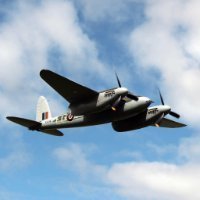
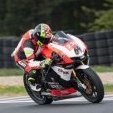


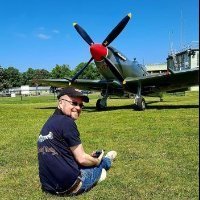
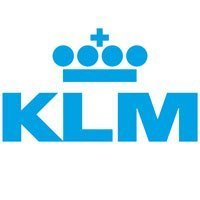



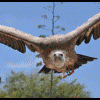
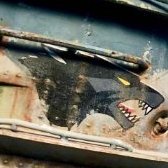
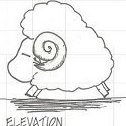
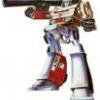

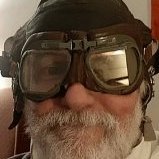
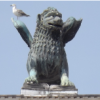



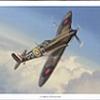
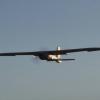

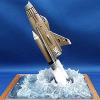
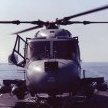






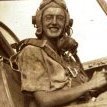
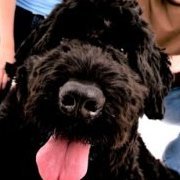


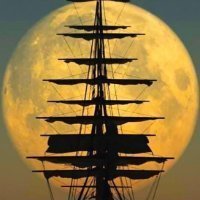
.thumb.jpg.cfc129272ffec824439b15e6013d5952.jpg)

